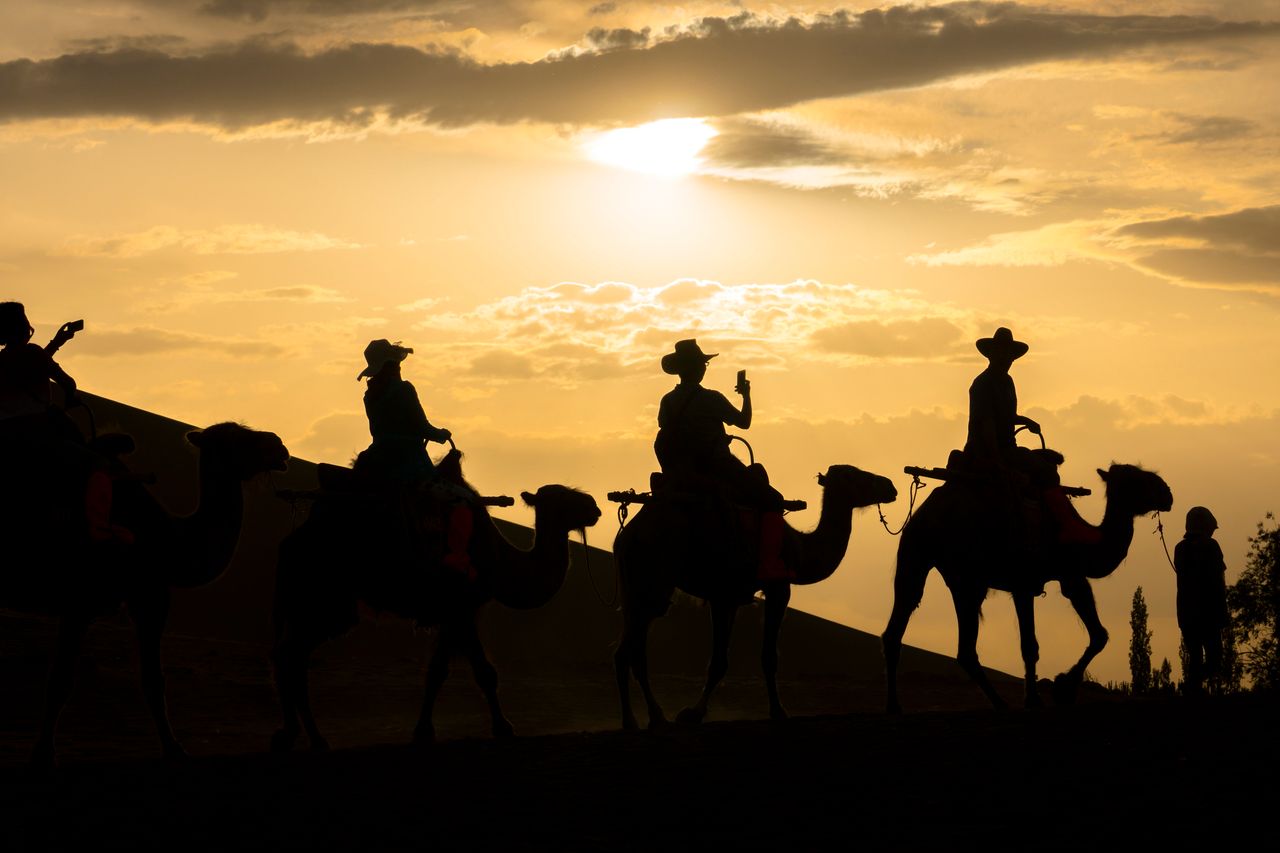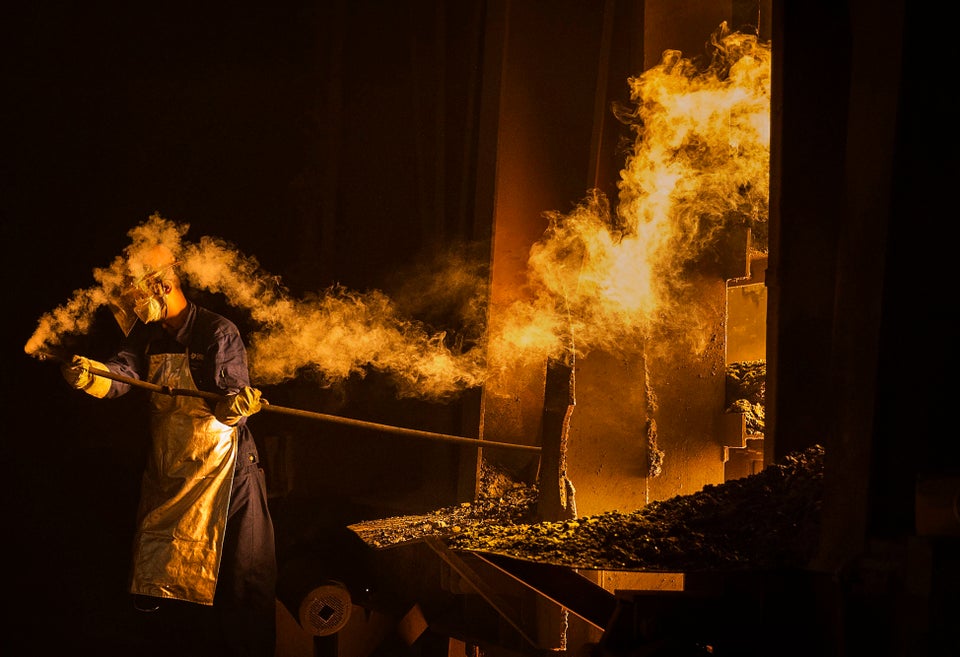When Chinese President Xi Jinping arrived in Astana, the capital of Kazakhstan, at the beginning of September 2013, few thought it was anything but another ordinary visit. Xi’s predecessor, Hu Jintao, had been to the Kazakh capital several times and usually talked about how he welcomed good relations with one of China’s neighbors to the west. But when Xi began his speech, it was obvious that something new was afoot. The Chinese president was offering more than the usual banal platitudes. He was talking about the future, and he was talking about a plan.
For more than 2,000 years, he said, the peoples who live in the heart of Asia had been able to coexist, cooperate and flourish despite “differences in race, belief and cultural background.” It was a “foreign policy priority,” he went on, “for China to develop friendly cooperative relations with the Central Asian countries.” The time had come, he said, to make economic ties closer, improve communication, encourage trade and enhance monetary circulation. The time had come, he said, for a “Silk Road Economic Belt” to be built. The time had come to breathe new life back into the old Silk Roads, a series of trade routes that once connected Asia, Africa and Europe.
Cynics listening to the speech would have been forgiven for thinking this was wishful thinking. Ever since the fall of the Iron Curtain, there had been talk of old connections rebooting and new Silk Roads surging to life. Indeed, just two years before Xi’s speech, Hillary Clinton, then U.S. secretary of state, gave an upbeat talk in Chennai, on the southeastern coast of India, in which she outlined her hopes for the future. “Turkmen gas fields could help meet both Pakistan and India’s growing energy needs,” she said, “and provide significant transit revenues for both Afghanistan and Pakistan. Tajik cotton could be turned into Indian linens. Furniture and fruit from Afghanistan could find its way to the markets of Astana or Mumbai and beyond.”
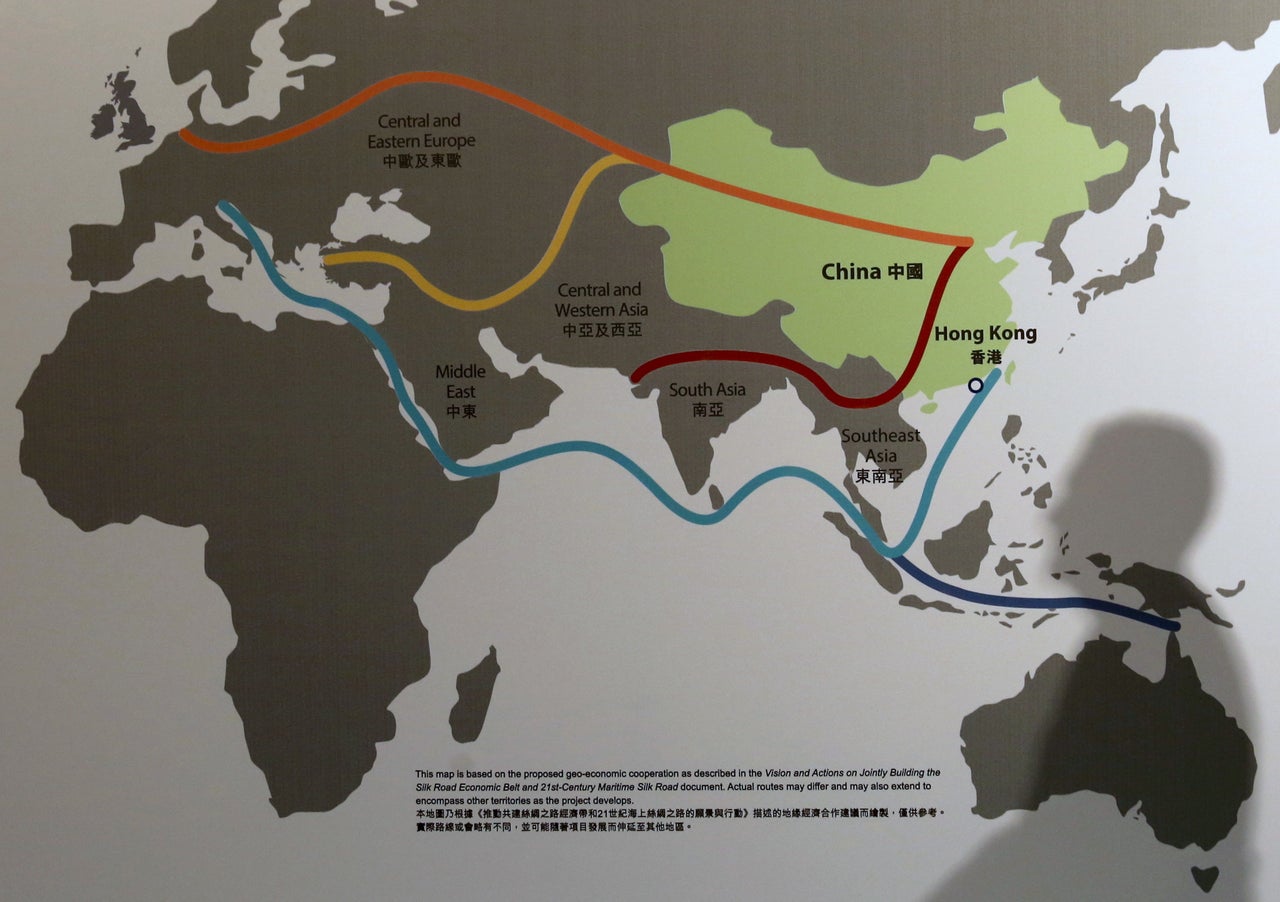
It all sounded positive and exciting. The problem was that nothing ever came of it. As a senior official at the Asian Development Bank pointed out in 2011, it was all very well talking of massive infrastructure projects like roads, energy plants and pipelines. But “unless the job is funded, it ain’t going to happen.” Anyone can have a vision. What matters is turning it into reality. When historians look back at the first two decades of the 21 century, it is unlikely that many will focus their attention on the failure of the U.S. to follow up on the project outlined by Clinton.
It will be another matter when it comes to tracking what happened after Xi left Astana. Barely two months later, in November 2013, the Central Committee of the Communist Party of China promised to take matters forward. “We will set up development-oriented financial institution,” the announcement stated, “accelerate the construction of infrastructure connecting China with neighboring countries and regions, and work hard to build a Silk Road Economic Belt and a Maritime Silk Road to form a new pattern of all-round opportunities.”
Since then, nearly $1 trillion has been earmarked for projects that form part of the Belt and Road Initiative. The scale of proposed investment is breathtaking, comparable only to the rebuilding of Western Europe after World War II when the Marshall Plan provided capital, expertise and energy to pull half a continent devastated by fighting and suffering off its knees.
“The scale of the initiative is breathtaking, comparable only to the rebuilding of Western Europe after World War II.”
The Belt and Road Initiative promises to do more. Tens of billions of dollars have been pumped into the Silk Road Fund and a handful of policy and development banks to push ahead with major investments in Asia, Africa and Europe across multiple sectors. In June, Commerce Minister Zhong Shen said terms had been agreed upon for at least 24 new deals in Kazakhstan alone, with a value of more than $8 billion that included investment in energy, mining, the chemical industry, mechanical manufacturing, agriculture and digital exchange.
Then there is the $55 billion that is due to be invested in Pakistan, of which around two-thirds is to be spent on building 21 power plants that will transform the energy security of a country where outages and blackouts interrupt the work day, reduce productivity and affect family life. Some experts believe Chinese investment might account for 20 percent of the Pakistan’s GDP over the next five years and boost growth by as much as 3 percent per year — an astonishing indication of the potential power of the shot in the arm that might be produced by the re-galvanization of the Silk Roads.
Given the context of forging present and future connections across continents, it is not surprising that much attention is being paid to the past. Precedents and parallels are important in providing intellectual credibility and framing the overarching vision of what is at stake. As Xi put it at a major forum in Beijing in May, the “ancient silk routes embody the spirit of peace and cooperation, openness and inclusiveness, mutual learning and mutual benefit.”
It is not surprising, of course, that the emphasis should be placed on the positive exchanges that were enabled and facilitated along the Silk Roads, rather than pointing out that disease, environmental change and violence also sometimes coursed along the arteries connecting east with west. Nevertheless, it is striking to note that while the rhythms along the Silk Roads were not always smooth, they compare favorably when set alongside those of Europe, whose history was shaped by almost never-ending confrontation and warfare.
“The rhythms along the Silk Roads compare favorably when set alongside those of Europe, whose history was shaped by almost never-ending warfare.”
The Silk Roads of the past were an abstract series of connections. There was no one single route or road connecting China across the center of Asia to the Mediterranean but rather a criss-crossing spider’s web that linked oasis to oasis, village to village, town to town. Most of the interaction along the Silk Roads was local in nature and involved petty transactions. Movement of high-value, high-status items — silks and other textiles, ceramics, spices, fruit, precious metals and jewels — was smaller in quantity but caught the eye of commentators as well as consumers.
People in the past were as curious about the world as we are today and were keen to try new tastes, consider new fashions and learn about new ideas. What has changed, of course, is the speed at which we are connected in the modern world: news and information moves more or less instantaneously from one side of the world to another, while we are able to travel thousands of miles quicker and more cheaply than any generation in history before us.
The Belt and Road Initiative therefore fits in alongside the paradigm of the old Silk Roads insofar as there is little congruity to which regions, countries and places fall within the geographic parameters of the scheme and which do not. In fact, some 60 countries stretching across Asia into Europe and Africa are part of the initiative, representing some 60 percent of the world’s population.
As Chinese state media has noted, while the leadership used to talk in terms of China playing an important role in the international community, the language has recently changed to talking of China as a “guide” for others and to Xi as a leader of the “new world order.” Nowhere is this change better illustrated than in the video above, released to mark the Belt and Road Initiative forum in Beijing in May. “Why is there conflict and war? Why is there prejudice and famine? What’s wrong with the world?” sings a mournful cartoon character. “What can we do?” runs the refrain. The answer, set out to comfort those worried by pollution, inequality, warfare and change, is clear: “China has a solution.”
That solution involves building a shared future for mankind — something Xi articulated in the spring of 2017 at the World Economic Forum in Davos, Switzerland, where he talked of economic and environmental sustainability and of the importance of cooperation. “When encountering difficulties,” he said, “we should not complain about ourselves, blame others, lose confidence or run away from responsibilities. Instead we should join hands and rise to the challenges.”
Few had any doubts who or what he had in mind when he said that or when he warned of the dangers of trade barriers being put up. U.S. President Donald Trump had talked regularly of imposing tariffs on trade with Beijing. Xi was pre-empting potential moves from a new White House administration, noting at Davos that “pursuing protection is like locking oneself in a dark room. While wind and rain might be kept outside, that dark room will also block light and air.” Troubles in developed economies had been caused by the “excessive chase of profit by financial capital and a great failure of financial regulation,” he said.
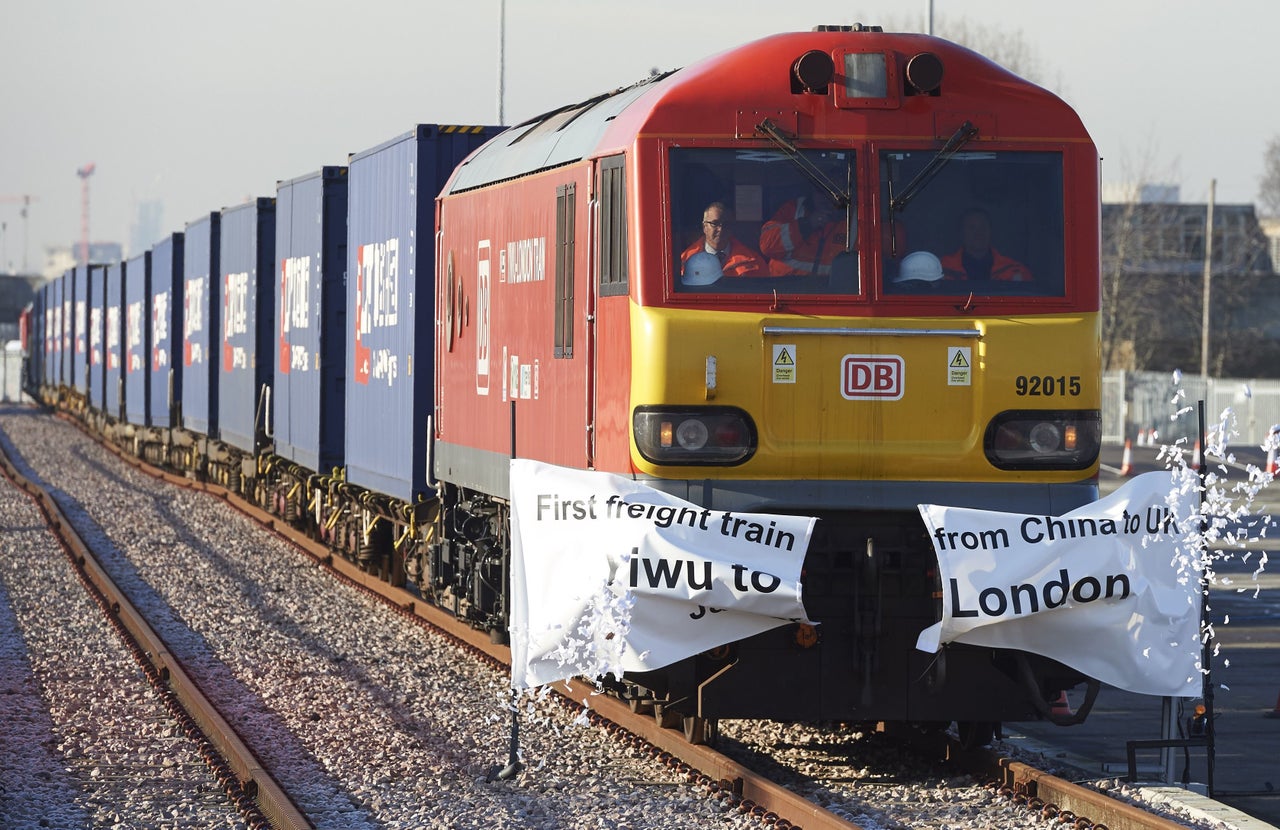
One of the key elements behind this massive investment is the preparation for China’s medium to long-term future. With energy needs expected to triple by 2030, securing oil and gas to fuel economic and industrial growth has been a priority. This is one reason why funding has been made available for pipeline construction but also for forward purchases of oil like the massive deal with Russia’s Rosneft, purportedly worth $270 billion.
Wider commercial and strategic aims are also part of the story. Connected by new roads that run through the China-Pakistan Economic Corridor up into western China, the Pakistani port city of Gwadar offers opportunities and options for both trade and security. Sending goods overland to Gwadar and onward significantly reduces the cost and time compared to shipping them from ports on the Pacific coast. Doing so provides an alternative to the anxieties over territorial issues in the South China Sea but also reduces the risks of passage through the pinch point of the Strait of Malacca, which handles almost all China’s maritime traffic. It also offers access to the Indian Ocean and the Gulf for Chinese navy ships, which are stationed and serviced out of Gwadar, ostensibly to provide protection for trade routes.
There is growing realization in Beijing that while it may be going too far to claim that China’s future depends on its neighbors, working to upgrade and improve the neighborhood is good for everyone. There are, of course, many reasons to do so. Leadership roles require the assumption of responsibilities— one reason why Chinese diplomats are increasingly active in shuttle diplomacy between Afghanistan and Pakistan, urging both nations to form a bilateral “crisis-management mechanism” to patch up a relationship that is often rather sketchy.
“The answer — set out to comfort those worried by pollution, inequality, warfare and change — is clear: 'China has a solution.'”
There is more to this than playing a role, though. Chinese troops have reportedly been operating either just inside Afghanistan, in the Wakhan Corridor, or close to the border the two countries share, which is just under 50 miles long. Several terrorist attacks in Xinjiang by Muslim extremists have raised fears of contagion of militant ideas and activities — leading to a heavy crackdown on the Uighur population in western China that has included putting soldiers on the streets and banning some Muslim names and the sporting of beards.
The attention being paid by Beijing to states beyond its western border has of course had the effect of raising the profile and importance of the provinces in western China itself, which have become among the fastest growing in the country. The Belt and Road Initiative has helped fuel a growth spurt in regions that were falling behind the prime strip along the Pacific coast. One expected side effect of the investment abroad is a rebalancing of China’s own demographic and socioeconomic profile, spread more evenly around the country.
That virtuous circle also lies behind some of the drive to provide credit lines and expertise for projects across Asia and beyond. They offer outlets for excess capacity at a time when China’s industrial growth is slowing down and the economy is shifting toward services. Improving links, making border controls quicker and more efficient, and agreeing on common standards to enable optimal velocity of exchange opens up potentially lucrative — and huge — markets for Chinese manufacturers and businesses.
Only about 6 percent of households in India have a computer, for example, and less than a third have a refrigerator. Countries like Pakistan (population 190 million), Bangladesh (160 million) and India (1.3 billion) are potential gold mines, especially if new infrastructure provides reliable energy and enables improvements in roads, railways, ports and digital networks. Xi talks about the new Silk Roads being a “win-win” situation. He might even be right.
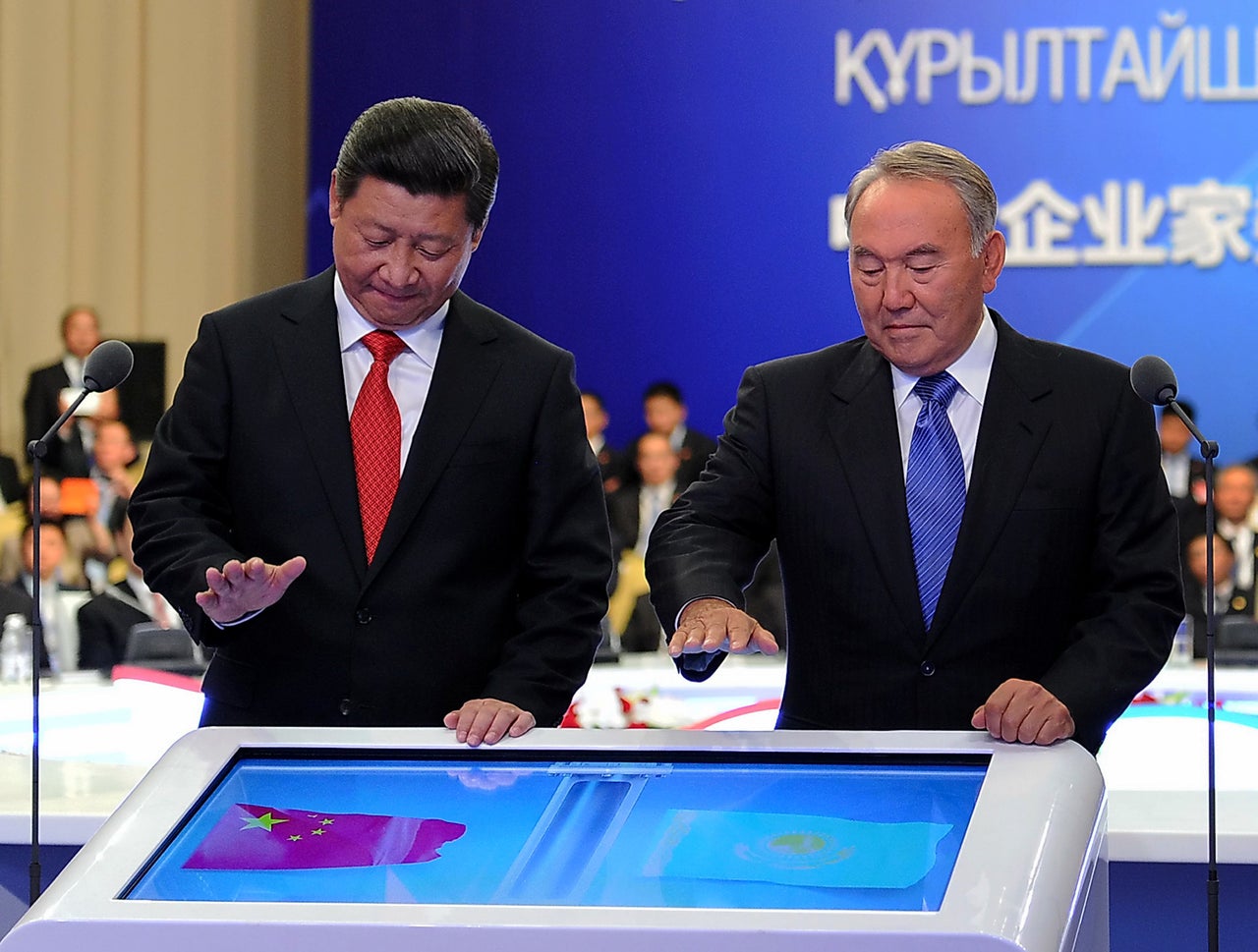
But he might not be. These are still early days. Given the scale and breadth of what has been envisaged, it is important to recognize that plans will change and reshape over time. Some projects will inevitably work out better than others; some will be more complicated, more troublesome and less rewarding than others. The success of the initiative will depend not only on how lessons are learned from when things go wrong but which lessons are learned: bad experiences can sometimes increase resolve and improve decision-making in subsequent projects. But they can also be off-putting and close doors entirely.
And what sounds exciting to Chinese ears often sounds positively threatening to others. The high visibility of Silk Roads investments has sharpened antagonisms in some quarters. New Delhi has reacted badly to announcements from Beijing about the new Silk Roads, partly due to hurt pride and a sense of being outmaneuvered by a rival. At stake is the long and difficult relationship that India has had with China going back centuries. Competition and animosities still run high, fueled by a long-standing, unresolved border dispute.
“Xi talks about the new Silk Roads being a 'win-win' situation. He might even be right.”
Alarm bells have also gone off, however, because of the proposed investments into Pakistan, an even greater rival to India than China, where upgrades to the army and economy have led to howls of complaint. The Indian government conspicuously avoided the Beijing forum in May, refusing to send an official delegation and instead issuing a sour statement about all that is wrong about the Belt and Road Initiative. “We are of firm belief that connectivity initiatives must be based on universally recognized international norms, good governance, rule of law, openness, transparency and equality,” read a statement issued by India’s Foreign Ministry. The statement said the Belt and Road Initiative would lead, among other problems, to an “unsustainable debt burden” for countries involved in Beijing’s plans.
Not to be outdone, India has been working on its own versions of the initiative, spawning multiple schemes to collaborate on projects with Bangladesh, Burma and Thailand — the “Act East” policy, the Trilateral Highway project and the “Neighborhood First” scheme. India has also developed a “Go West” strategy that is centered on creating a port facility at Chabahar in southeastern Iran, to mirror and rival Pakistan’s Gwadar Port.
Robust rhetoric gives the impression that direct confrontation between India and China may not be far away. Memories of the war between the two countries in 1962 still loom large half a century later ― in recent months, a stand-off on the Dolam Plateau has caused military activities to rise sharply and stoke tensions that already run high. The Indian defense minister angrily noted this month that “the India of 2017 is different from the India of 1962,” General Bipin Rawat, the chief of staff of the Indian Army, stated that India “is fully ready for a two-and-a-half front war” — presumably meaning being able to fight China, Pakistan and dissidents in India simultaneously.
Although bluster like this can have consequences, it is also dangerous to let overenthusiastic declarations and denunciations take center stage. After all, there is no reason why India’s own version of the Belt and Road Initiative cannot succeed just as China’s can. And there’s no reason why the two cannot complement each other. Indeed, the fact that attention in Delhi has turned to how to best understand and react to activity led by Beijing should be welcomed and seen as part of a new Asian age where old connections are remade, new ties are forged and mutual opportunities are explored.
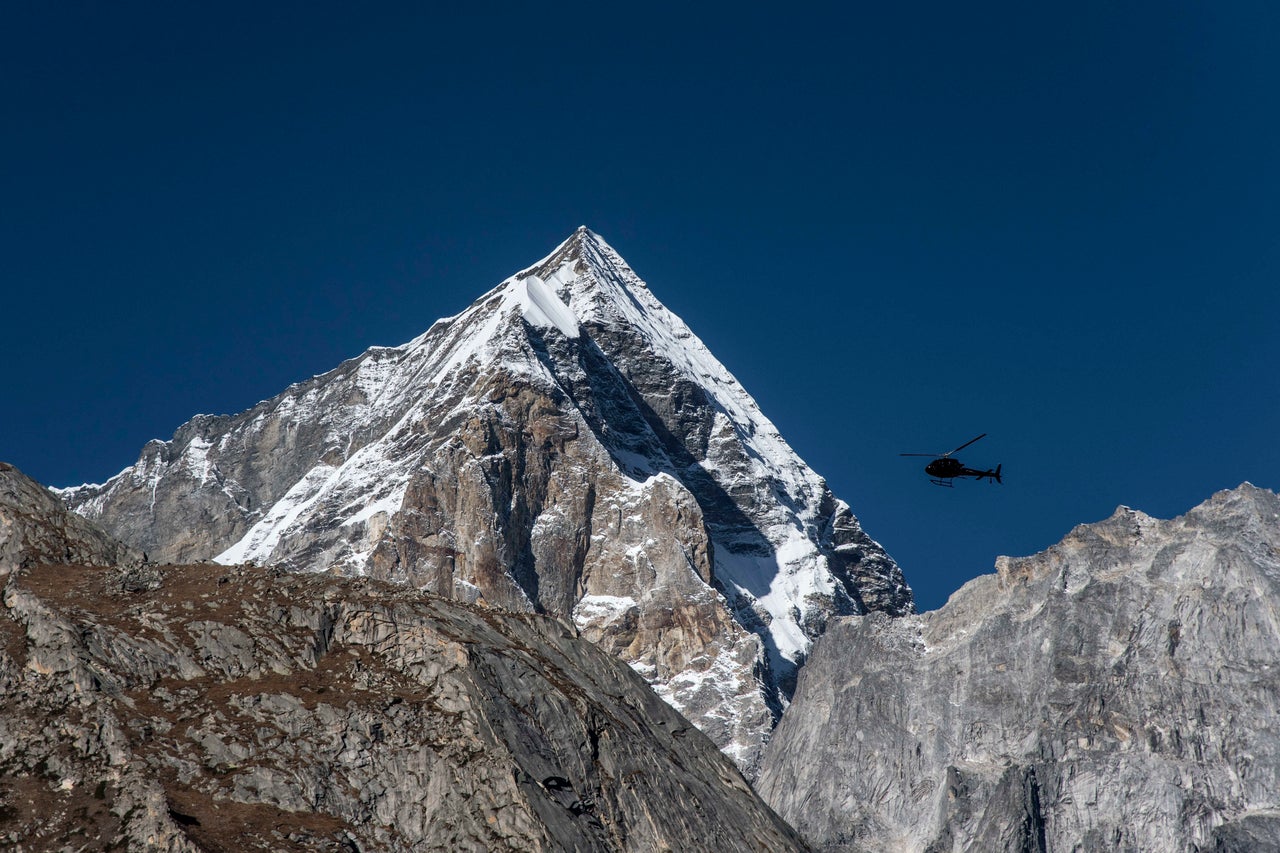
The development of the Belt and Road Initiative and the responses in India are being watched carefully in Moscow. Russia has been careful to offer warm words of encouragement, with President Vladimir Putin noting that he had “no doubt that we will work together … [to] benefit both the Chinese and the Russian peoples,” welcoming “a new stage of cooperation in Eurasia.”
But Russia has also been keeping its options open. The Kremlin has been conducting vigorous and regular diplomatic activity in the Gulf, the Middle East and Central Asia — and also with India. Indian Prime Minister Narendra Modi was welcomed to St. Petersburg this summer “to discuss a wide range of issues related to strengthening the privileged strategic partnership between Russia and India.” Putin is not just watching from the sidelines — he is thinking about how to best participate during a time of transition.
Hopes are partly set on the Eurasian Economic Union, a free trade area set within a wider vision of joint investment, intelligence sharing and mutual interests. This body, made up of Russia, Belarus, Kazakhstan, Kyrgyzstan and Armenia, overlaps with the Belt and Road Initiative — at least according to Putin. Rather than compete with China’s plans, he has said, “the main thing we should do is combine our efforts” — suggesting that the EEU is Russia’s own version of how to improve connections across the heart of Asia.
“What sounds exciting to Chinese ears sounds positively threatening to others.”
Countries from the Pacific through the Indian Ocean, Persian Gulf and the Mediterranean recognize the potential possibilities of the Silk Roads. But many also have limited choices. “Other countries have lots of ideas but no money,” said Hun Sen, the prime minister of Cambodia. “But for China, when it comes with an idea, it also comes with the money.” The lure of possible investment is not welcomed by all, as angry demonstrations in Kazakhstan in 2016 over the possibility of opening up land for Chinese buyers proved. Many in Pakistan are wary about potential suffocation by Chinese investment, both because of its sheer scale and firepower, but also because they worry that they’ll lose control of the entire supply chain, with Chinese farmers using Chinese pesticides and fertilizers to grow crops that are gathered by Chinese workers, transported on Chinese vehicles and sold to consumers in China.
Adding to these problems is the asymmetry of the Belt and Road Initiative. While China is keen to open up new markets abroad, it is not opening up its own domestic market. Kenyan President Uhuru Kenyatta is one leader who has been vocal about the need to “increase opportunities for Kenyan goods to penetrate the Chinese markets.” “If [China’s] win-win strategy is going to work, it must mean that, just as Africa opens up to China, China must also open up to Africa,” he said.
This proved a sticking point at the Beijing forum this year, where representatives of the European Union refused to sign a joint statement about the wonders of the Belt and Road Initiative. The EU was not able “to confirm our joint commitment to international trade rules and to a level playing field for all companies,” according to Daniel Rosario, the EU spokesman for trade. As a statement issued by the French embassy in Beijing noted tartly, the initiative’s success depends on “open, rules-based public tenders and reciprocal market access.”
“'If [China’s] win-win strategy is going to work, it must mean that, just as Africa opens up to China, China must open up to Africa.'”
- Kenyan President Uhuru Kenyatta
We are living in a time of change in a world where power, wealth and expectations about what tomorrow will bring are in flux. Eight hundred years ago, a similar massive shift in the center of gravity took place when Genghis Khan and his heirs built the land empire connecting the Pacific coast of China with the Mediterranean. The initial, sudden wave of conquest gave way to peace and to what is sometimes called the Pax Mongolica — the Mongol peace — a long period of stability, rising prosperity and cooperation. The Mongols paid the price for not commissioning historians to preserve their legacy. Today they are synonymous with violence rather than tolerance, with crude use of force rather than sophistication and with haphazard destruction rather than careful planning.
Once upon a time, all roads led to Rome, as the saying goes. These days, all roads lead to Beijing. In the coming years, much will depend on how well China executes its plans for the future and how well it can choose projects that really deliver a win-win scenario not just for business tycoons and political leaders but for local populations. Much will also depend on the ability to explain what is going on and to not seek the best bargain but rather the best long-term deal. Perhaps most important of all, it depends on being able to win goodwill through building relationships that are ultimately based not on commercial and economic interests but on mutual respect.
History teaches us that the cornerstone for this geopolitical alchemy lies in education. Learning about each other’s histories — about what has mattered in the past and what matters in the future, and being able to understand grievances, slights and petty rivalries — is what will ultimately decide how successful the Belt and Road Initiative will be in the long term.
